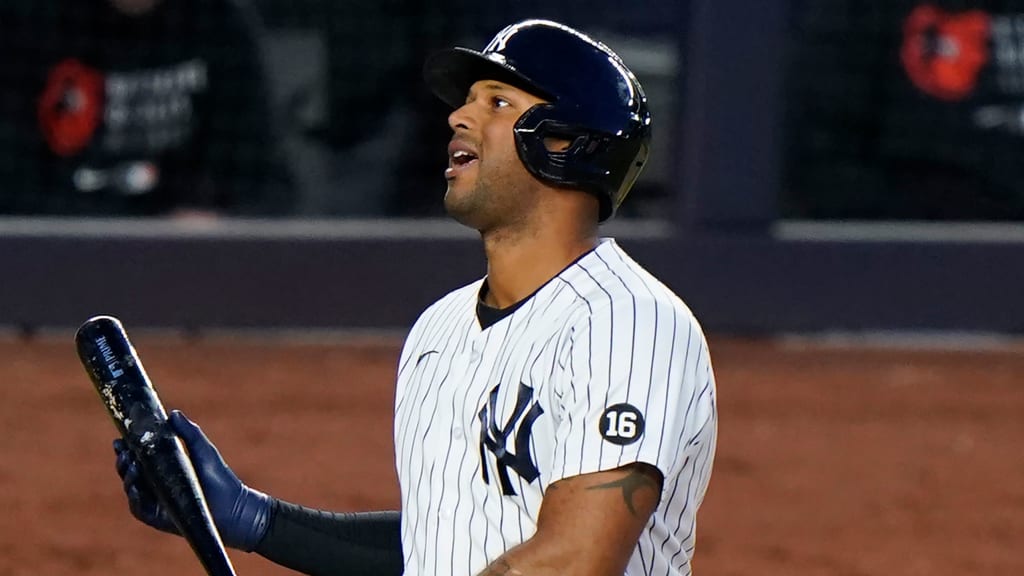
June has arrived, inching us closer to the July 30 Trade Deadline.
The standings remain tight, as 22 of the 30 teams were within six games of a postseason spot entering Thursday. Many of those teams will use the next four-to-six weeks to determine their status as a buyer or seller, but that doesn’t mean we can’t discuss what we may see between now and the end of July.
Without further ado, let’s get to your questions. As always, you can submit your queries anytime on Twitter @feinsand.
(Some questions may be edited for clarity)
Are the Yankees going to trade for a center fielder? I can’t see how they don’t.
-- @bryanv1234
Aaron Hicks’ likely season-ending wrist injury means the Yankees -- who traded Mike Tauchman to the Giants last month -- are currently starting Brett Gardner and his .559 OPS in center field. Not good. Where could they turn to find a new center fielder?
Ketel Marte of the D-backs would be the best solution, though he is signed through 2022 (with affordable club options for 2023 and ’24), so the price tag to acquire him could be more than Yankees general manager Brian Cashman is willing to pay.
Pittsburgh’s Bryan Reynolds is another player who could be on the trade block, though he’s arbitration-eligible for four years beginning this winter, so he won’t come cheap, either.
Starling Marte fits the rental category, but he figures to draw interest from a number of clubs, which could spark a bidding war that drives up his price, too.
Michael A. Taylor has been playing well for the Royals after signing a one-year, $1.75 million deal last offseason. Kansas City has been hovering around .500 to remain in the mix in the AL Central, but he could prove to be a cheap alternative if he becomes available.
Bottom line: finding a new center fielder won’t be an easy task for the Yankees, but if they believe such a move is necessary, there are options out there if they’re willing to pay the freight.
Who is one team that is playing well right now but you predict will struggle and force them to sell? Who is one team that is struggling right now that will turn it around and become possible buyers?
-- @KarterKudrna33
The Twins won six out of seven in late May, giving Minnesota hope that its lost season was turning around. Things haven’t gone as well since that run, as Rocco Baldelli’s club went 2-4 to fall back to 11 games below .500 entering Thursday. I wrote about the Twins a couple of weeks ago, at which time it seemed like they were unquestionably headed to a summer fire sale, and while some wondered whether that solid run might change things, I believe Minnesota will ultimately be a seller come July (if not sooner).
On the other side, the Phillies seemed to have turned things around with an 8-3 run in early May, but they went 4-11 in the second half of the month. Still, Joe Girardi’s squad entered Thursday tied for second place in the underwhelming NL East, only 4 1/2 games behind the Mets. Dave Dombrowski has never been afraid to make a big move before the Deadline, and this Phillies team is built to win now. I can see them making a move or two in July to bolster the pitching staff and make a run at the division title.
What do you see the A’s prioritizing at the Deadline? Seems like Chris Bassitt is the only real arm ready for postseason action. Do you think starting pitching, bullpen or a bat is their biggest priority?
-- @seelenbac30
Oakland ranks in the middle of the AL in both runs scored (7th) and OPS (6th), so adding a bat would seem to be a priority. I have said it before and I’ll say it again: Trevor Story is the perfect fit for the Athletics, who have suffered through Elvis Andrus’ dreadful season. Matt Chapman should be better than he’s been, which would help the lineup, but adding a big bat in Andrus’ place would be a huge lift.
The pitching staff also ranks in the middle of the AL, its 3.98 ERA placing eighth of the 15 teams. It’s easy to see the A’s dealing for a reliever or two (as they seem to do on a near-annual basis), though a move for a proven starter would also bolster a rotation that has been about league average for much of the season.
Does anyone on expiring contracts have any trade value for the Angels?
-- @Soundoffsports1
Roughly half of the Angels’ roster can be free agents at the end of the season, but that doesn’t mean many of those players will bring back any real value come July.
Four Angels starting pitchers are among that group, but neither José Quintana nor Dylan Bundy is pitching well enough to think they would bring back anything substantial. Andrew Heaney is having a decent season, but I wouldn’t expect him to command a big return. The most intriguing arm might be Alex Cobb, who has pitched well this season, including two starts since returning from the injured list. If that continues, Cobb could be viewed as a solid mid-rotation acquisition for a contender.
Raisel Iglesias and Steve Cishek would likely be a boost for a contender’s bullpen, while José Iglesias (no relation) would be a suitable shortstop option for a team in need at that position -- assuming he performs well when he returns from a hamstring injury.
Will Luis Castillo get traded?
-- @braves100271
Castillo has been a popular name on the trade speculation market for a couple of years, but the Reds have resisted the temptation to cash in on his strong performance in 2019 and ’20.
Well, 2021 has not gone very well for the right-hander, who was 1-8 with a 7.22 ERA through 11 starts. Castillo is averaging fewer than five innings per start and has allowed more home runs (8) in 52 1/3 innings than he did in 70 frames (5) last season, while his strikeout-per-9 rate has fallen from 11.4 in 2020 to 8.3.
Castillo’s pre-2021 track record is the only thing sustaining any type of trade value, so if he’s able to turn things around in June, he could become a solid chip for Cincinnati. He’s earning $4.2 million this year and is arbitration-eligible for two more years, so the Reds could wait until the offseason to move him as he would still be under control through 2023.
Is there any benefit to being the first to sell? Do teams that sell first net a bigger return than similar players on teams that sell later?
-- @AntsInOK
There are two ways to look at this. The benefits of selling early are that fewer teams are dangling players out there for trades, so teams looking for upgrades have fewer options to consider. In addition, trading a player in June gives the acquiring team more than half a season of production from that player as opposed to two months for somebody acquired at the Deadline.
On the flip side, there are naturally going to be fewer motivated buyers in June, as teams are still trying to figure out where they stand in the race. The closer we get to July 30, the clearer the postseason picture becomes, which means those teams in the mix should have more of a “go for it” approach when it comes to trades.
There’s no concrete answer to this question, but teams with assets to sell would be wise to gauge what the market looks like now, then decide whether it makes more sense to move early or wait until mid-to-late July.
